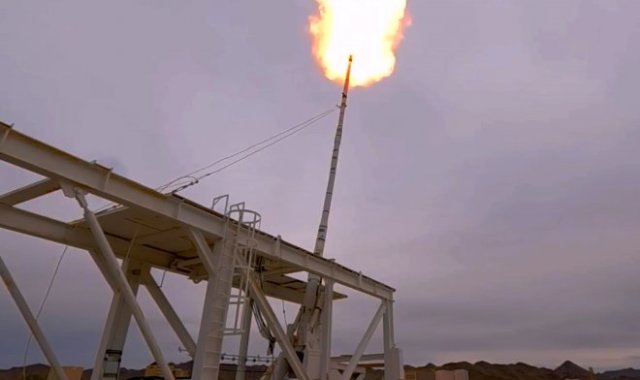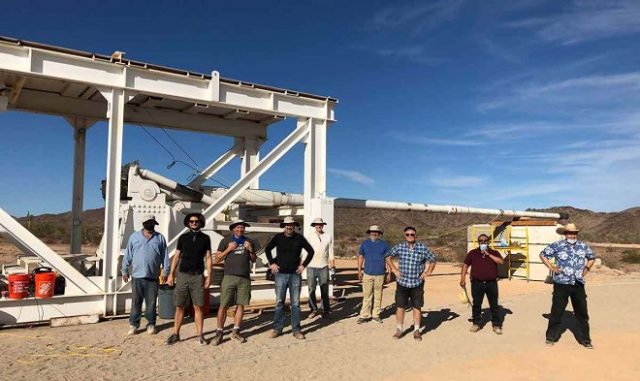
Hydrogen Cannon
The company "Green Launch" has built and tested a hydrogen pulse installation for launching objects into near space. In fact, it is a high-power gas cannon that is capable of putting various objects into orbit. Its main advantage is the low cost and safety of each launch, as well as minimizing the harmful impact on the environment.
Dr. John W. Hunter worked for 30 years at Lawrence Livermore National Laboratory, where he participated in the creation of a hydrogen launcher as part of the SHARP project. In 1992, on a 122-meter stand, it was possible to disperse the projectile to Mach 9, surpassing the level of efficiency of the railgun-type installation. Subsequently, a new record was set — the speed of the projectile fired was 11.2 km / s, which is equivalent to the second cosmic speed.

Hydrogen Cannon
Hunter and his colleagues proved the fundamental possibility of launching objects into space using a hydrogen cannon, but in practice everything turned out to be more complicated. The gun is capable of firing only very small projectiles, which experience an overload of 30,000 G. This is not a problem for modern electronics, in addition, if something goes wrong, only one mini-satellite will be lost, and not the entire batch of several hundred, as in the case of a rocket launch. Preparing the gun for firing takes 60-90 minutes, so you can plan a flexible schedule of launches. When shooting, hydrogen, helium and oxygen are used, so no emissions of harmful substances into the atmosphere occur and no debris falls to the ground. The price of one launch is about ten times less than on a rocket. However, space is a secondary goal for Green Launch, because it is much cheaper and easier to launch probes into suborbital space. This is too high for balloons and too low for satellites, but the study of the mesosphere is now in great demand, and the company already has a list of orders for launching probes from leading US universities.
